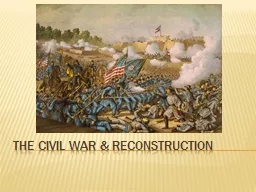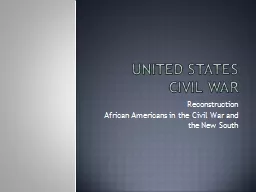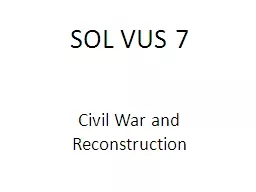PPT-The Civil War & Reconstruction
Author : min-jolicoeur | Published Date : 2018-10-23
Causes of the Civil War Disagreement over future of Slavery States rights over centralized Federal power Breakdown in party politics Cultural and economic differences
Presentation Embed Code
Download Presentation
Download Presentation The PPT/PDF document "The Civil War & Reconstruction" is the property of its rightful owner. Permission is granted to download and print the materials on this website for personal, non-commercial use only, and to display it on your personal computer provided you do not modify the materials and that you retain all copyright notices contained in the materials. By downloading content from our website, you accept the terms of this agreement.
The Civil War & Reconstruction: Transcript
Download Rules Of Document
"The Civil War & Reconstruction"The content belongs to its owner. You may download and print it for personal use, without modification, and keep all copyright notices. By downloading, you agree to these terms.
Related Documents














